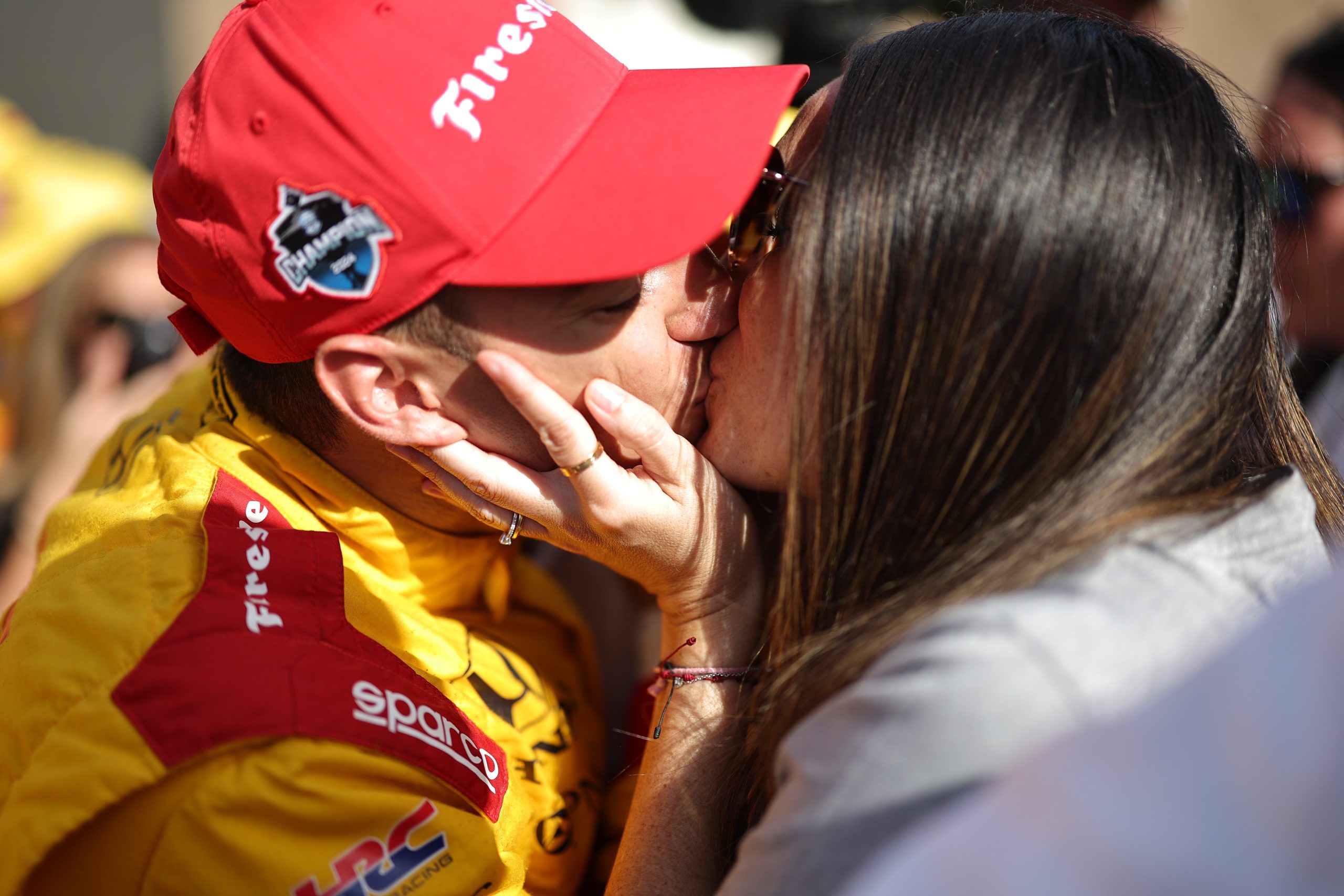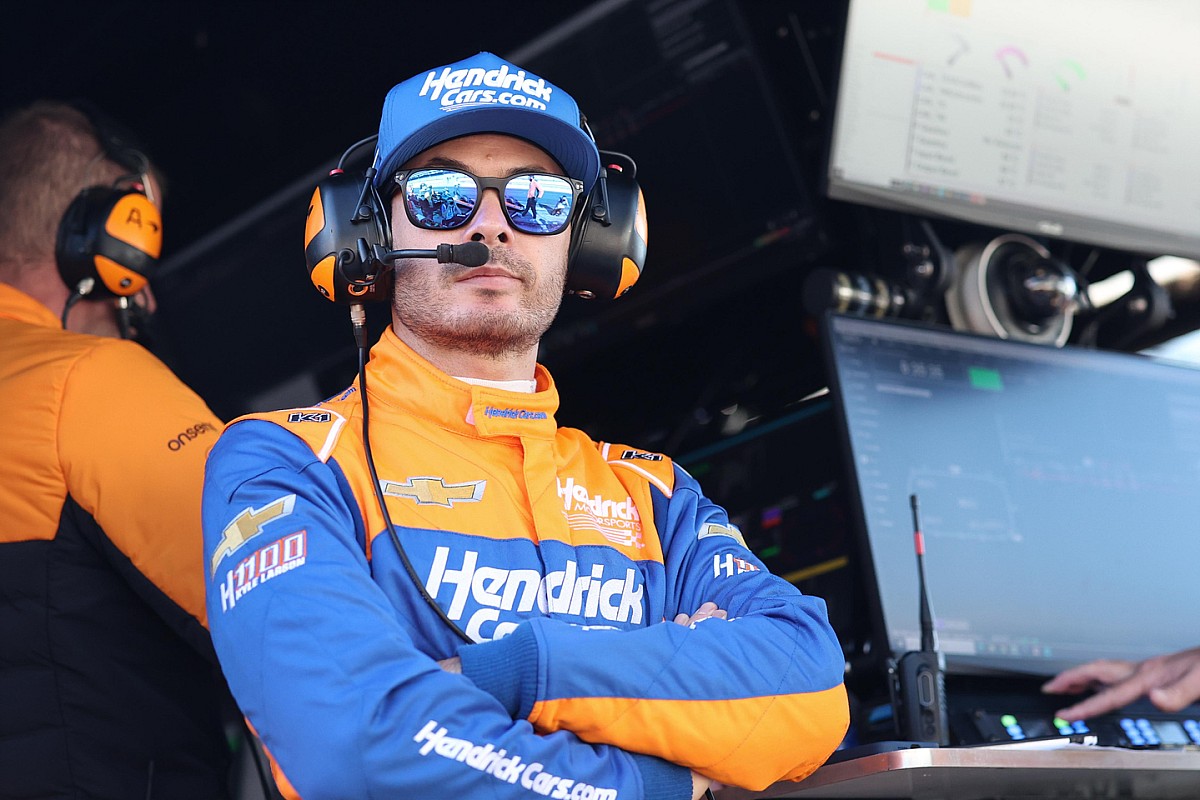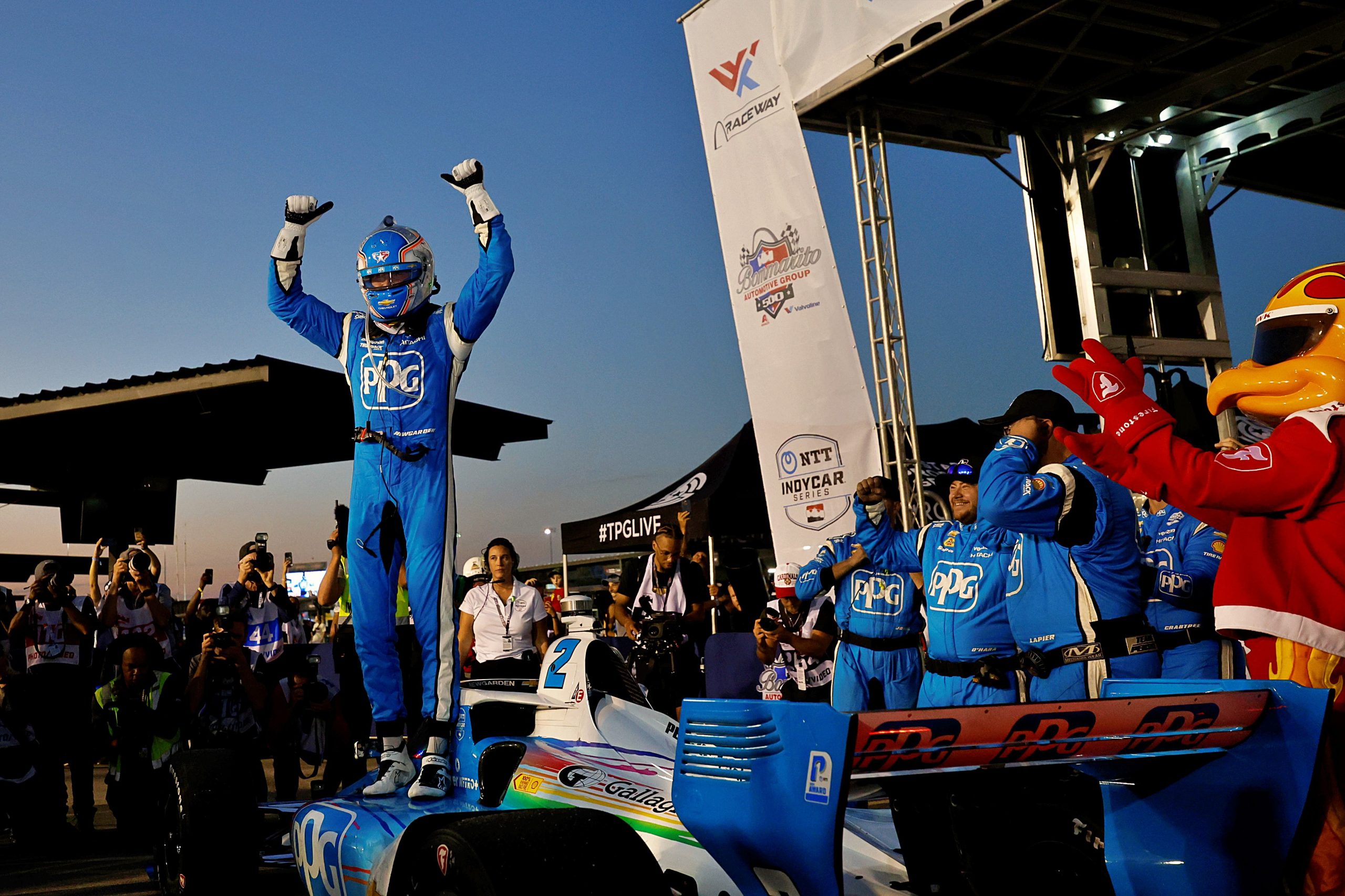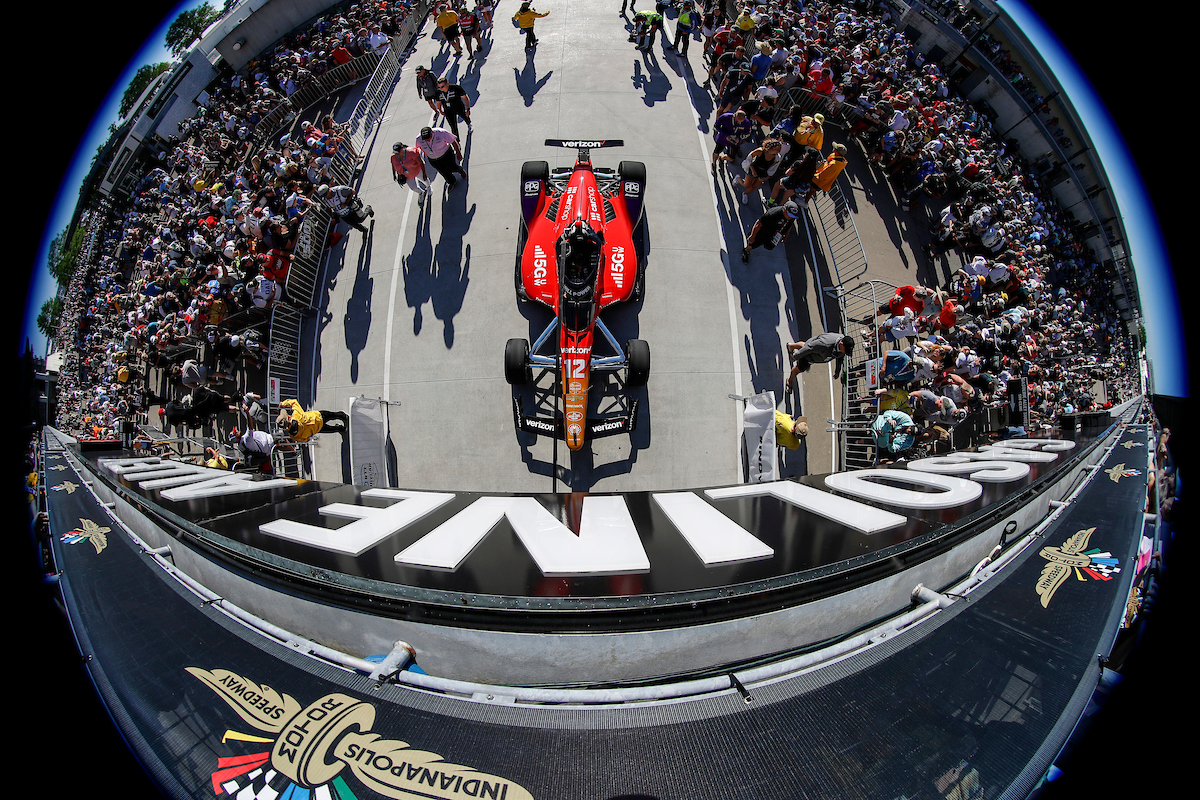What material is the IndyCar windscreen made of?


Have you ever found yourself captivated by an IndyCar race and wondered, “What material is the IndyCar windscreen made of?” Understanding the intricate details of these racing marvels can add a new layer of fascination to your viewing experience.
The windscreen of an IndyCar, also known as the Aeroscreen, is made from a proprietary, optically engineered, high-performance material called Opticor, which is produced by PPG Industries.
In this article, we will delve deeper into what Opticor is, why it is used for the Aeroscreen, and how it contributes to the safety and performance of the IndyCar. Moreover, we’ll explore other materials used in the construction of an IndyCar, offering you a well-rounded understanding of what goes into these high-speed machines. Strap in as we take you on a high-octane journey into the world of IndyCar construction.
Table of Contents
The Importance of Windscreen Material in IndyCars
In the racing world of IndyCar, the choice of windscreen material can make a big difference to success. Weight, visibility – every aspect plays a role. To show this, we’ve made a table with the materials and their advantages.
| Material | Advantages |
|---|---|
| Polycarbonate | Lightweight, shatter-resistant, clear. |
| Arylic | Tough, lightweight and cost-effective. |
| Hybrid Composites | Customizable stiffness, deflection and impact resistance. |
It’s clear why teams choose so carefully. Aerodynamics and strength are key, plus good visibility. These all decide if a team wins or falls short.
IndyCar themselves say polycarbonate is the material they use. They continue to develop it for safety and sustainability. So, let’s go on a ride to see the common materials for IndyCar windscreens…
Common Materials Used for IndyCar Windscreens
IndyCar windscreens are made of high-quality materials that are able to withstand the speed and force with which they are subjected. The materials used in IndyCar windscreens are carefully chosen and tested to ensure their strength and durability.
A table categorizing the common materials used for IndyCar windscreens is as follows:
| Materials Used | Properties |
|---|---|
| Polycarbonate | High impact resistance |
| Acrylic | Good optical clarity |
| PETG | High flexibility, shatterproof |
| Makrolon | Excellent clarity, toughness |
It is important to note that each type of material used for IndyCar windscreens may have different unique features, proportions, and durability. It is essential to consider each factor for ideal conditions based on circumstances, weather, and driving situations.
Top IndyCar windscreen suggestions include the addition of a UV or anti-scratch coating to enhance longevity and maintain optimal visibility. Specifically, regular cleaning using renewable cleaners without abrasive characteristics could further extend the life of the windscreen and keep it clear. Additionally, a replacement schedule after 10-15 hours of active racing could ensure that the windscreen remains in excellent condition.
In summary, IndyCar windscreen materials are chosen based on their structural and optical qualities to withstand the rigours of high-speed racing. Suggestions for maintenance and replacement could help extend its durability and usage.
Polycarbonate
Polycarbonate is the polymer material commonly used for windscreens in IndyCars. This plastic is lightweight but robust. Its unique properties make it ideal for screens.
The table below shows some characteristics of polycarbonate:
| Polycarbonate | |
|---|---|
| Weight | Lightweight |
| Strength | Impact-resistant |
| Clarity | High clarity |
| Durability | Long-lasting |
Polycarbonate also offers excellent optical properties and UV protection. This makes it resistant to wear over time. Because of this, it is a popular choice for IndyCar windscreens.
Technical advancements have made the materials strong and durable. This was seen at the 2009 Indianapolis 500. Raphael Matos crashed into Mario Moraes’s car at over 200 miles per hour. Matos’ flying tire hit Marco Andretti’s windscreen made of polycarbonate and cracked it. Despite the damage, the strength of the polycarbonate protected Marco from serious injuries.
To sum up, the table and story show that polycarbonate is great for IndyCar windshields. Its impact resistance, durability, clarity, strength and UV resistance make it perfect for extreme racing conditions.
Acrylic
Acrylic – a highly transparent material that provides an unrestricted view to the driver. It has a higher impact resistance compared to glass and is much lighter too. Plus, it can be easily fabricated into complex shapes with reasonable tolerances.
Makrolon – not just a fancy name for plastic. It’s the material that keeps IndyCar drivers safe from bug splats on the windshield. A material that offers incredible optical clarity and scratch resistance.
Makrolon
Makrolon is the ultra-clear, durable material of choice for IndyCar windscreens. It’s renowned for its resistance to impact and shattering, as well as its lightweight and clarity. It takes less material to make a strong windscreen than other materials. Although the cost of Makrolon is high, it’s more cost-effective in the long run.
PPG Industries was the official supplier of Makrolon windshields for the IndyCar Series from 2003 to 2020. So, when you want the future of windscreen technology, look no further than Lexan!
Lexan
IndyCar windscreens require a material that is high-strength, impact-resistant, and lightweight. One such material used in auto racing is Polycarbonate, also known as Lexan. This material is impact-resistant, light-weight, has high strength, and excellent transparency. It can also withstand extreme temperatures.
A comparison table of Lexan’s features is as follows:
| Features | Description |
|---|---|
| Durability | Impact-resistant |
| Weight | Light-weight |
| Strength | High strength |
| Clarity | Excellent transparency |
For optimal performance and safety on the racetrack, proper cleaning techniques and handling instructions must be followed. Ammonia-based products should be avoided as they may erode the windscreen’s surface. Additionally, handling with care during installation and maintenance procedures can enhance performance and prolong usability.
The Advantages and Disadvantages of Each Material
Each Material’s Pros and Cons
The IndyCar windscreen is designed to provide maximum performance, and the material used plays a crucial role in fulfilling that purpose. The attributes of each material have distinctive advantages and disadvantages.
Advantages and Disadvantages of Different Materials Table
| Material | Advantages | Disadvantages |
|---|---|---|
| Polycarbonate | High impact resistance | Scratches easily |
| Acrylic | Excellent optical clarity | Low impact resistance |
| Hybrid | Combines advantages of both polycarbonate and acrylic | Expensive |
Unique Details About IndyCar Windscreen Material
This windscreen material should meet the IndyCar specifications and must pass the FIA test. The material must be able to resist high projectile impacts and has to provide exceptional optical clarity providing maximum visibility to the driver.
Suggestions to Improve the Windscreen Material
To improve the current windscreen materials, manufacturers could consider applying anti-scratch coatings to the polycarbonate material. In the case of acrylic material, it could be backed with an impact-resistant material. Finally, research and development is key to creating a hybrid material that can improve the overall performance and safety of the windscreen.
Polycarbonate
Polycarbonate is a thermoplastic, highly durable and versatile material used in manufacturing. It is popular due to its exceptional strength, optical clarity, and shock resistance.
Advantages:
- Durable and robust
- Lightweight and easy to shape
- Excellent thermal resistance
Disadvantages:
- Expensive compared to other plastics
- Prone to scratching
- Susceptible to yellowing over time with exposure to UV rays or heat
Originally developed for military applications in the mid-20th century, polycarbonate is now widely used in transportation, construction, electronics, medical equipment, architecture and more.
Acrylic
Acrylic is an often used substance in the manufacturing sector, with lots of pros and cons.
Advantages:
- Durable and strong
- Cost-effective
- Lightweight and easy to handle
Disadvantages:
- Can be scratched
- Can discolour in sunlight
- Not heat-resistant without treatment
Plus, it has great clarity, and can be tailored into many shapes and colours without losing transparency. Pro Tip: To get the best results, choose high-quality acrylic and use the right finishes, if extra protection is needed against outside elements.
Makrolon
Makrolon is a popular choice across industries due to its properties. It’s highly impact resistant and offers excellent optical clarity. It can also withstand long exposure to the sun. Flexibility is another upside, as it can be thermoformed or injection molded.
However, it can be prone to scratching and has a lower temperature threshold, but these issues can be addressed with coatings or special processing techniques.
Makrolon is a favorite among manufacturers and designers due to its flexibility and durability. Industry reports from Grand View Research, Inc. predict that the global polycarbonate market size will reach USD 28.77 billion by 2027, driven by the continued high demand for Makrolon and similar materials.
Lexan
| Advantages | Disadvantages |
| High impact resistance | Scratches easily |
| Lightweight | Not heat resistant |
| Malleable | Vulnerable to chemicals |
| Glossy finish | May yellow from UV |
Lexan is still a popular choice due to its impact resistance and weight. But, it’s not ideal if resistance to chemicals or heat is needed. Here are some tips for using Lexan:
- Use protective coatings or films to reduce scratches.
- Store Lexan away from direct sun or use UV inhibitors to prevent yellowing.
- Consult with manufacturers or experts for the right grade of Lexan for your project.
The Evolution of IndyCar Windscreen Material
IndyCar racing series has revolutionized its windscreen material. Modern tech and innovation has made them more durable, functional, and safer. Polycarbonate plastic offers clear visibility and shields drivers from collisions and debris. Aeroscreen with laminated glass has extra strength and a physical barrier against crashes and objects. A wiper blade system has been added to enhance visibility on rainy days. Plus, tear-offs allow drivers to peel off a layer during pit stops to reduce debris impact. As Formula 1 adds heads-up display tech, IndyCar’s windscreen materials could benefit from future techno-materials.
What material is the IndyCar windscreen made of? – Final Thoughts
The visors for IndyCar drivers are crafted from polycarbonate, a polymer that is shatterproof and provides excellent optical performance. The windscreen is made of two layers of polycarbonate, with an anti-reflective coating to improve visibility in varying weather conditions and reduce glare.
Polycarbonate is lightweight and has a high strength-to-weight ratio, making it the perfect material for the high-speed racing environment found in IndyCar. This helps prevent accidents while providing great visibility during races.
The IndyCar Series is dedicated to testing new materials, designs and coatings to find ways to improve driver safety without compromising on performance or adding weight to the car. This constant pursuit of better technology ensures safer races for drivers and spectators.
In conclusion, the windscreen for IndyCars is built from polycarbonate, which is durable, shatterproof, lightweight and provides superb optical performance. Research efforts ensure the safety of drivers is prioritized while keeping the racing experience exciting.
What material is the IndyCar windscreen made of? – Frequently Asked Questions
What material is the IndyCar windscreen made of?
A: The IndyCar windscreen is made of a proprietary polycarbonate material called Opticor.
Why was the windscreen introduced in IndyCar?
A: The IndyCar windscreen was introduced to improve safety for drivers by protecting them from flying debris on the track.
How does the windscreen affect the performance of an IndyCar?
A: The windscreen has minimal effect on the performance of the car, as it is designed to be as aerodynamically neutral as possible.
Has the IndyCar windscreen been tested for durability?
A: Yes, the windscreen underwent rigorous testing for durability and impact resistance before being approved for use in IndyCar races.
Does the IndyCar windscreen obstruct the driver’s vision?
A: No, the windscreen is designed to be as clear and transparent as possible, with minimal distortion and no obstruction of the driver’s vision.
Has the IndyCar windscreen been used in other racing series?
A: The windscreen technology has been adopted by other racing series, including Formula 1 and sports car racing.










